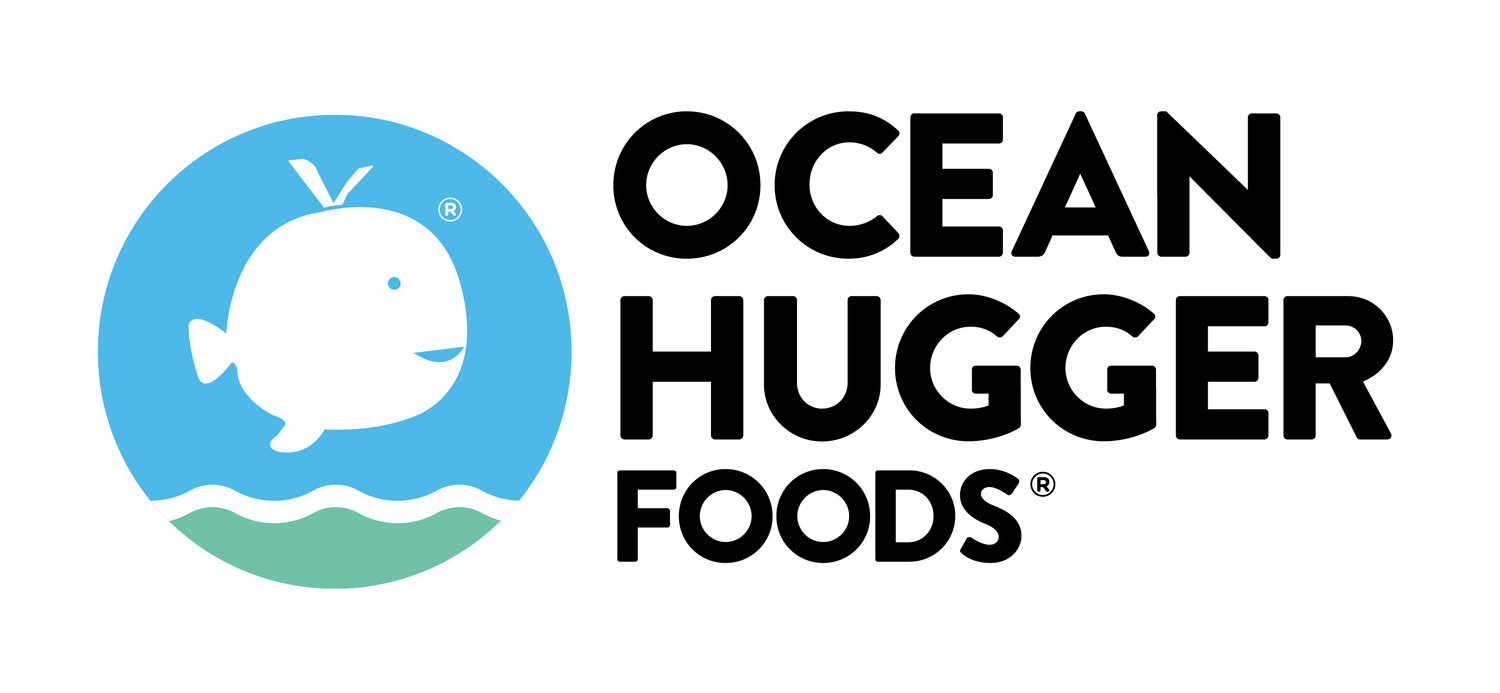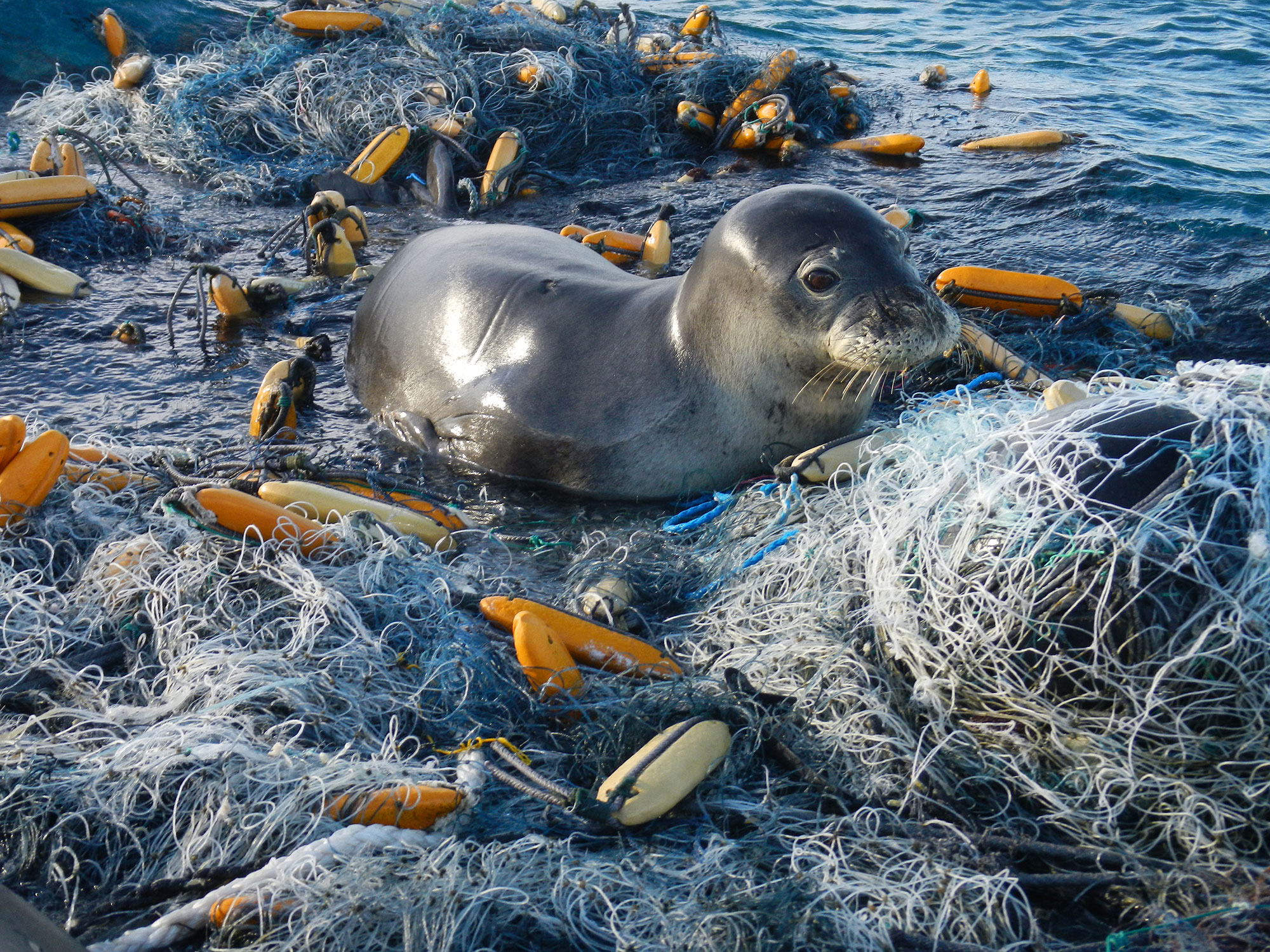It’s Halloween. Let’s talk about something scary.
Our reliance on plastic has turned into a real horror movie. Perhaps you’ve seen the victims on your feed: the viral video of the sea turtle with a plastic straw in its nose, or Chris Jordan’s gut-wrenching images of baby albatrosses starved to death due to a diet of plastic. While it may be depressing to be confronted with these images, it is a good thing that we are finally allowing the true impact of plastic on the oceans to come into the light.
Despite the increased attention, there is one type of ocean pollution that has remained invisible in these conversations about plastic. Its scary name is perfect for this time of year: ghost gear.
What is ghost gear?
“Fish, sharks, rays, sea turtles, invertebrates, birds, and mammals (including whales, dolphins, seals, and dugongs) have all been found in ghost gear, including many endangered species. ”
According to the Global Ghost Gear Initiative, “Ghost gear refers to any fishing equipment or fishing-related litter that has been abandoned, lost or otherwise discarded.” These nets, traps, lines, and other equipment can be found floating freely in the ocean, dragging along the seafloor, or tangled up in coastal waters. From there they go on indiscriminately killing ocean life for years, and sometimes decades. Fish, sharks, rays, sea turtles, invertebrates, birds, and mammals (including whales, dolphins, seals, and dugongs) have all been found in ghost gear, including many endangered species. What’s worse, a deadly cycle is created as the initial body count ramps up, because other creatures are attracted to what they see as a potential food source and get caught themselves.
In addition to killing sea life directly, ghost gear physically damages delicate coastal and seafloor ecosystems such as coral reefs. It also poses a major navigational and safety hazard. Finally, depending on what it’s made of, small pieces of this gear may be ingested by sea life or broken down into microplastics that build up in ecosystems.

Ghost Fishing diver removing abandoned net in Aegean Sea.
How bad is it?
“This study is confirmation that we know abandoned and lost gear is an important source of mortality for a whole host of animals, and we need to broaden the plastic conversation to make sure we solve this wedge of the problem.”
It is hard to know exactly how much total gear has been dumped in the ocean over the years, and therefore it is also difficult to determine how many creatures have lost their lives to this problem. According to the FAO, one investigation concluded that about 10% of all marine litter is ghost gear. Studies focusing on specific areas are not promising. In Chesapeake Bay alone, it is estimated that 150,000 crab traps are lost each year out of an estimated 500,000 total deployed (30%). In an eight-year period, one study of Washington’s inland waters analyzed 870 derelict gillnets and found over 32,000 marine animals inside. Another found that 46% of the junk in the Great Pacific Garbage Patch is fishing gear. George Leonard, the chief scientist at the Ocean Conservancy, told National Geographic, “This study is confirmation that we know abandoned and lost gear is an important source of mortality for a whole host of animals, and we need to broaden the plastic conversation to make sure we solve this wedge of the problem.”
Where does ghost gear come from?
Some loss of some gear due to storms or true accidents is bound to happen, and many fishing operations do go to great lengths to get lost gear back. However, it is also true that a lot of ghost gear has simply been dumped in the sea. This is driven by an increase in illegal fishing operations that abandon gear when under pressure from enforcement. It is also driven by the fact that the commercial fishing industry currently lacks serious regulation and protocol for the disposal or recycling of gear. When it is time for fishers to update their gear, it costs them more to dispose of their old gear responsibly. Too many choose to simply ditch their gear at sea, even though it is in the best interest of fisheries in the long run to handle gear responsibly.
So, can I start using plastic straws again?
The attention plastic straws and bags have been getting lately is absolutely vital. In order to cut our individual plastic footprint, we all need to take a serious look at how plastic seems to have overtaken our lives. The objects we use most are a great place to start. However, it would be irresponsible to omit the role that fishing gear plays in damaging the oceans, especially after it has already contributed to other environmental issues when it is in use, such as overfishing, destruction of the ocean floor, and bycatch.
What can we do to reduce ghost gear in the oceans?
The FAO provides an overview of solutions to the ghost gear issue. These include tracking fishing gear over its lifespan with legislation for the mandatory marking of gear, better reporting systems for lost gear, and increased use of GPS by fishing operations to track their gear. At the end of its life, gear buy-back initiatives would incentivize fishing operations to dispose of equipment responsibly. Finally, increased use of biodegradable gear would reduce the deadliness of gear that is lost. However, these solutions have yet to be adopted at a large scale.
In the meantime, much of the effort to solve the ghost gear problem has come from organizations like Ghost Fishing, which recovers lost gear, and The Global Ghost Gear Initiative, which works to mobilize members of the fishing industry, private sector, civil society, academia, and government around this issue.
In addition to supporting these organizations, we hope you’ll explore plant-based alternatives to the seafood that comes across your plate. It has never been easier to find these options in grocery stores, restaurants, and online recipes, and more are coming every day. Little changes, like swapping your fish taco for a crispy cauliflower one, go a long way. By reducing the amount of seafood you consume, you can stop supporting the irresponsible fishing practices that lead to ghost gear.




